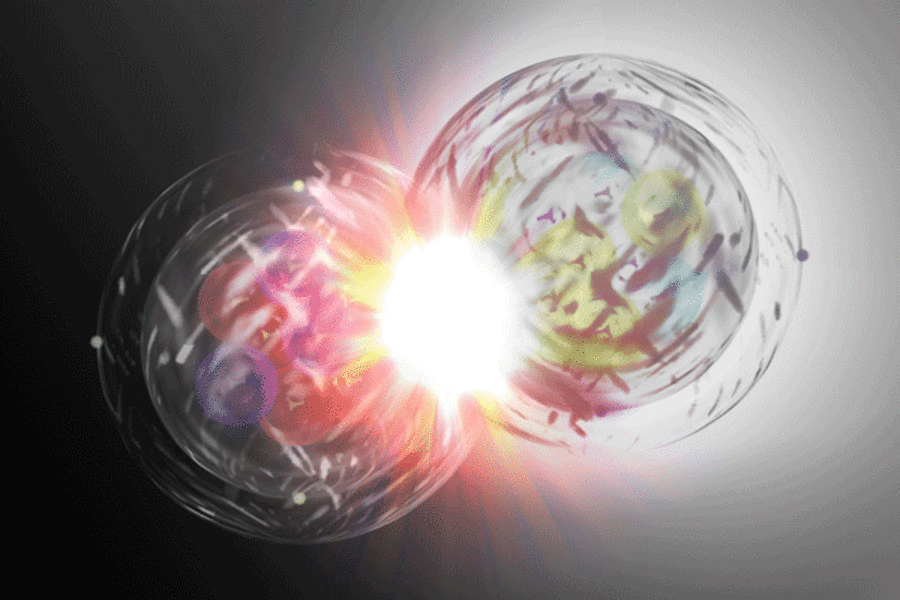According to Oxford physicists, who have analyzed data from the Large Hadron Collider, subatomic particles can switch between matter and antimatter, reports Newatlas. Further suggesting that the immeasurable weight difference between these two particles could save the universe from disappearance shortly after the universe began.
The antimatter is a type of “evil twin” of ordinary matter, but surprisingly similar. In reality, the only difference is that antimatter has the opposite charge. In other words, when matter and antimatter particles come into contact, they get annihilated with massive explosive energy.
To complicate things, some particles, like photons, are actually antimatter of their own. Others could even be seen to exist simultaneously as strange mixtures of two states, thanks to superimposed quantum mechanics (most famously marked by Schrödinger’s cat thought experiment). That is, these particles actually vibrate between the state of matter and antimatter.

Back and Forth due to “Tiny” Difference in Weight
And now, a new particle has joined that dedicated club – the charm meson. It’s a subatomic particle composed of charm quarks and up antiquarks, whereas its antimatter equivalent is composed of charm anti-quarks and up quarks. Usually, these states are maintained individually, but new research shows that charm mesons can switch the two states spontaneously.
The reseason behind charm meson switching states is that these two states – matte and antimatter – have a slightly different mass. And with “slightly” I mean in the extreme – as according to precise measurements made by CERN’s Large Hadron Collider (LHC) the difference between mass of two states is only – 0.00000000000000000000000000000000000001 grams.
Physicists at Oxford University have made this accurate precision measurement by using the data collected during the Large Hadron Collider’s second run process. Charming mesons are produced at the LHC in Proton-Proton collisions and they usually travel a few millimeters before they decompose into other particles.
Now to discover this tiny difference in the mass of matter and antimatter as the main factor that drives whether a charmed meson turns into an anti-charm meson or not, researchers compared the charming mesons that tend to travel further versus those that decay sooner.

This could create big Implications for Big Bang
This absolutely tiny discovery could have a huge impact on the universe. According to The Standard Model of particle physics, the big bang is the creation of equal amounts of matter and antimatter, and over time all would have collided and annihilated each other leaving the cosmos empty. But that didn’t happen, and somehow the matter came to dominate, but what caused this imbalance?
One hypothesis raised by the new discovery is that charm meson-like particles transition from antimatter to matter more frequently than they change from matter to antimatter. Well with the plans for LHC’s successor – the Future Circular Collider (FCC) – and even a Moon-based hadron collider further in the future, we will surely get to know more about this. Like whether it’s true or not, and if so, why? and can be a great clue that will open up one of the heart’s greatest puzzles of science.
